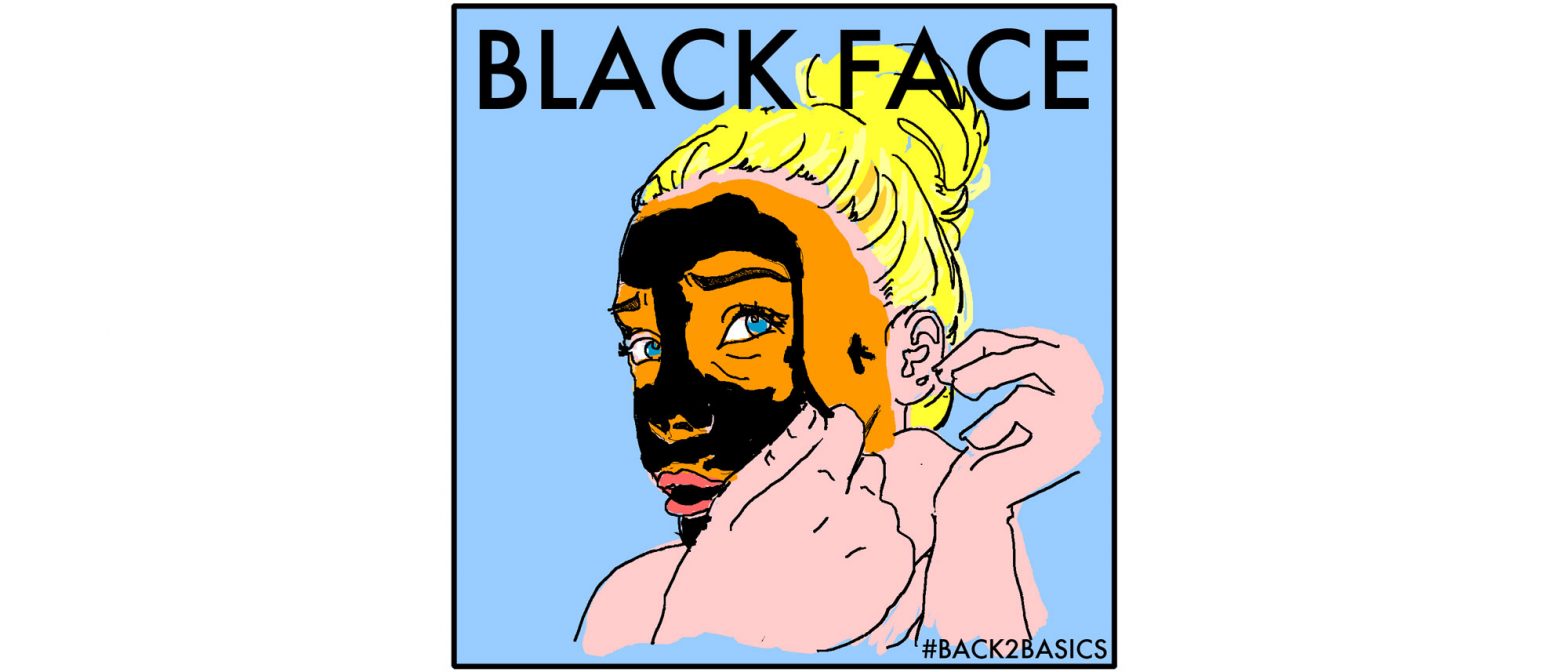“…the filthy scum of white society, who have stolen from us a complexion denied them by nature, in which to make money, and pander to the corrupt taste of their white fellow citizens.” – Frederick Douglass
TL;DR: Blackface is always degrading and racist, regardless of potential black friends, or if you don’t ‘see’ race.
Blackface: the act of dressing up as a black person by a non-black person. Popular contemporary ways of displaying blackface include: darkening your skin and especially your face; wearing clothes that you assume all black people wear and in a fashion that is mocking (think ‘ghetto’ or ‘thug’); throwing up obscure gang signs, or what you assume are gang signs, in order to ‘act black’; and depicting blackness in all its complexities as a caricature.
In Europe and the US, the history of blackface goes back to the 1800s when white actors would use shoe polish or grease paint to darken their skin and perform cartoonishly exaggerated representations of black people. These ‘minstrels’ depicted black people who had freed themselves of enslavement, or those who were still enslaved and working on the plantation, in ways that reinforced the idea that black people were inferior to white people. Such characterisations would reassure white audiences and, under a guise of altruism, justify their depraved actions against black people.
Blackface provided the white working class with a clearly recognisable, common enemy against which they were able to unite in humour. These supposedly comedic depictions were characterised by exaggerated large red lips and bulging eyes, and associated with behavioural traits that were the antithesis to those associated with white, so-called civilised, people. White people created this monstrous spectacle of blackness in order to define themselves and their pristine whiteness in opposition to it.
Two of the most influential blackface performers were Jim Crow and Zip Coon. Jim Crow (real name Thomas Dartmouth ‘Daddy’ Rice) sang well-known minstrel songs such as “Jump Jim Crow”, while one of his acts involved disturbing peaceful, white settings with blaring noise. His offensive performances came to define an entire era in American performance theatre where blackface and the mockery of black people was normalised to such a degree that it created the conditions for legally-enforced racial segregation, known as the Jim Crow era.
Similarly, George Dixon, who performed under the stagename Zip Coon, made a mockery of free black people who dressed as members of the American elite, but whose status was betrayed by the use of racialised vernaculars. These characters gave rise to the stereotype of the ‘coon’.
The nineteenth century produced many other racially-charged stock characters, including:
The Mammy: a caricature of a loveable black nanny or housekeeper who was deeply devoted to her slave master and his family, even if this was to the detriment of her own family.

The Piccaninny: a depiction of a small black child with unkempt, ‘nappy’ hair and bulging eyes who was obsessed with watermelons. The child’s needs were reduced to base, near animalistic instincts, stressing the idea that black people are less than human.

Following the American Civil War in the 1860s, minstrel shows began losing popularity when new vaudeville performances grew in popularity and gradually dominated the theatre industry. Yet blackface continues to be rampant in popular culture and cartoons to this day, perpetuating the same tropes and stereotypes that were present in minstrel shows of the nineteenth century.
https://www.youtube.com/watch?v=gH4ivOyO0PQ
Today, blackface is perhaps most visible at Halloween, or any other event that offers an excuse to play dress-up. During such celebrations it remains an astonishingly unshakable element, despite a history that is deeply steeped in racism and the degradation of blackness. Blackness is not a costume, irrespective of whether you believe it no longer carries the same connotation it once did because we live in a “post-racial society” now. Blackface is still dehumanising and continues to be practiced in the most offensive ways:
Blackface-as-Halloween-costume is one of the most audacious ways of displaying privilege. It’s a way for non-black people to perform (their distorted notion of) blackness when it suits them, without having to deal with the prejudices and violence that black people face on a daily basis. So, when you as a non-black person think that we should ‘get over it’ because blackface happened a long time ago, remind yourself that it’s not up to you to decide, because you’re not and never will be a victim of anti-blackness.
Back to Basics is a Skin Deep project aiming to redefine and reevaluate words or expressions that we hear regularly in our daily lives and in the media, that are often decontextualized and poorly defined. We want to give different, and hopefully clearer, perspectives on what these terms mean, to provide you over time with a little handbook of quick and shareable definitions for when you need them most.



